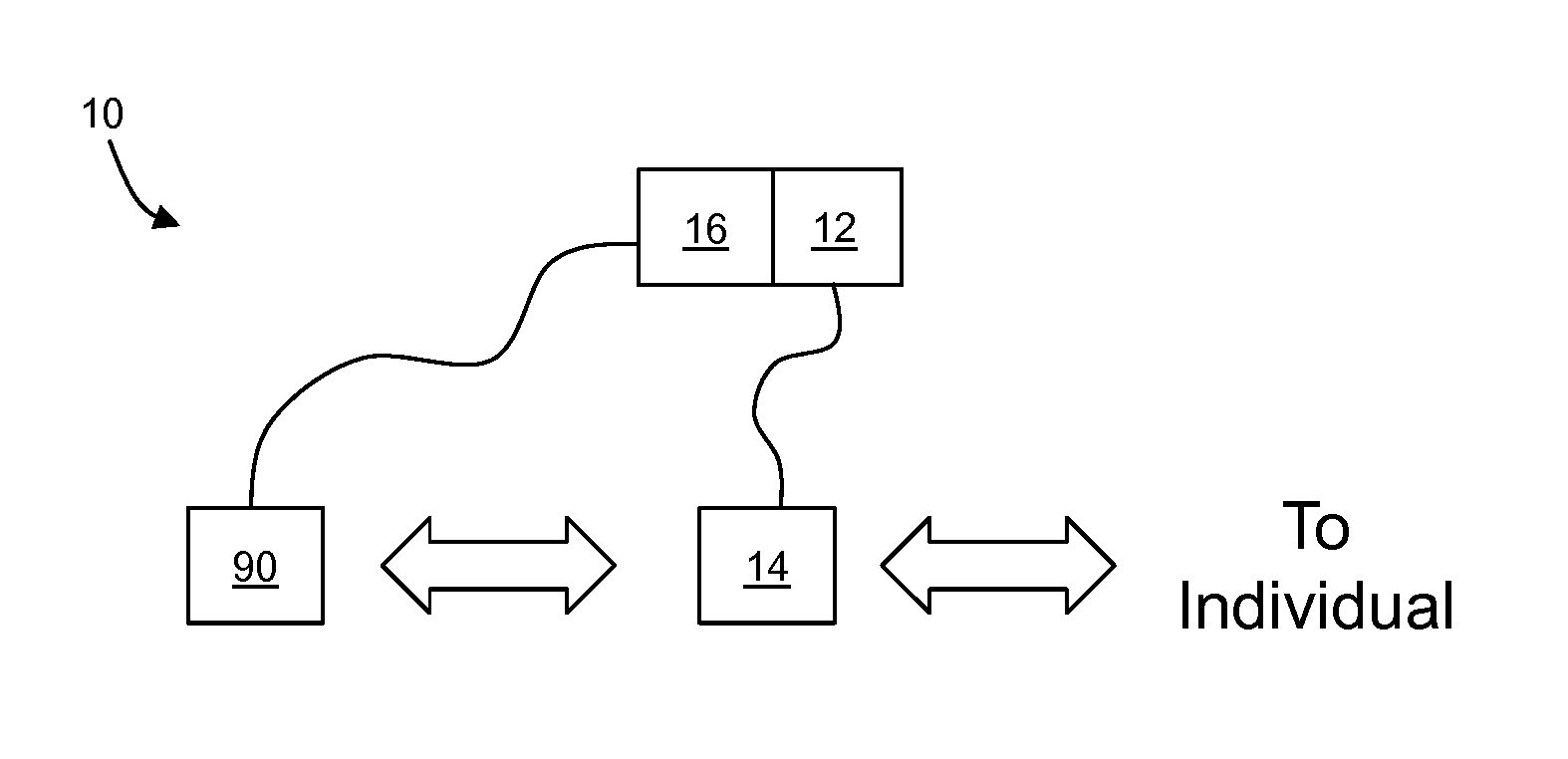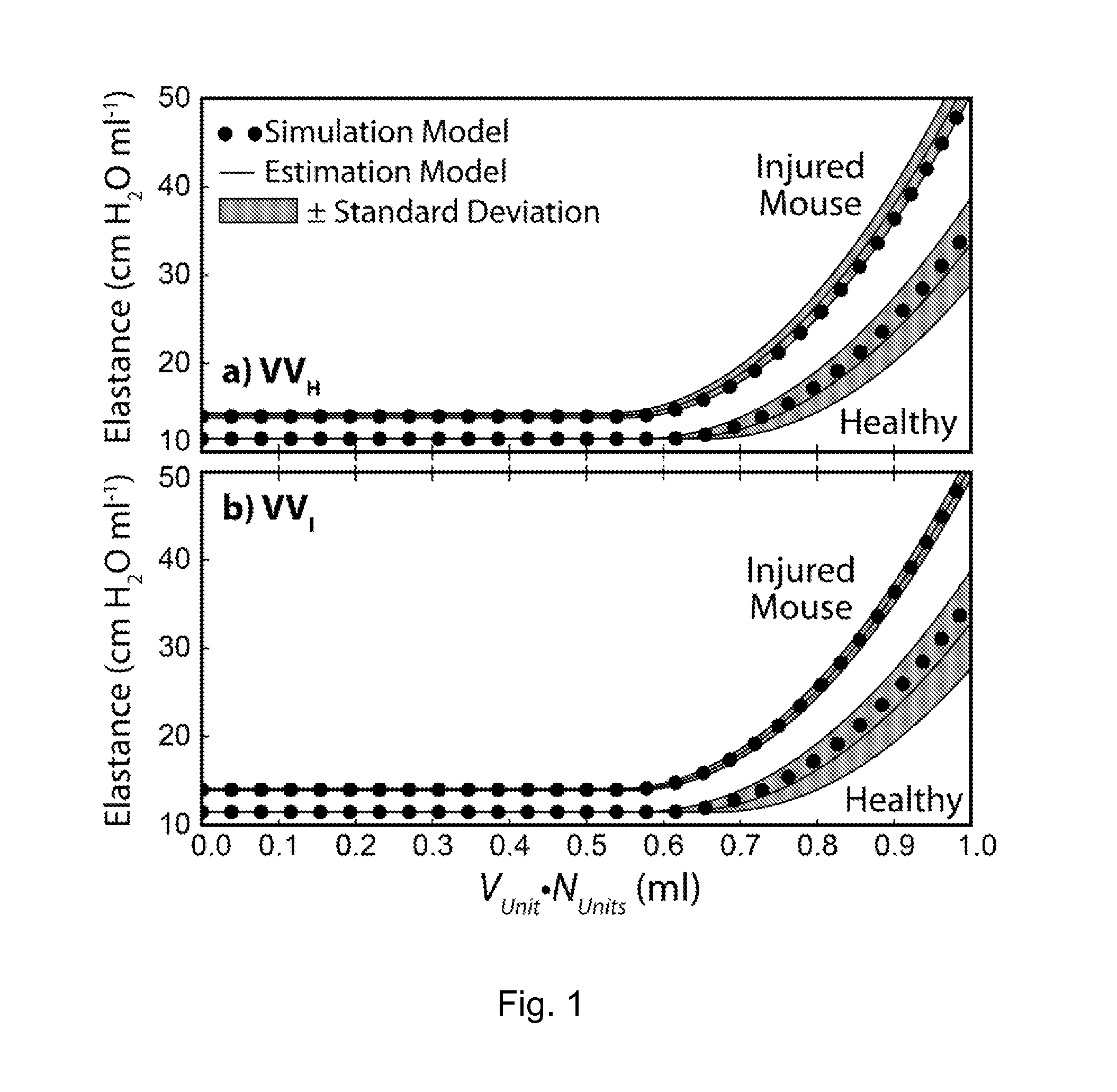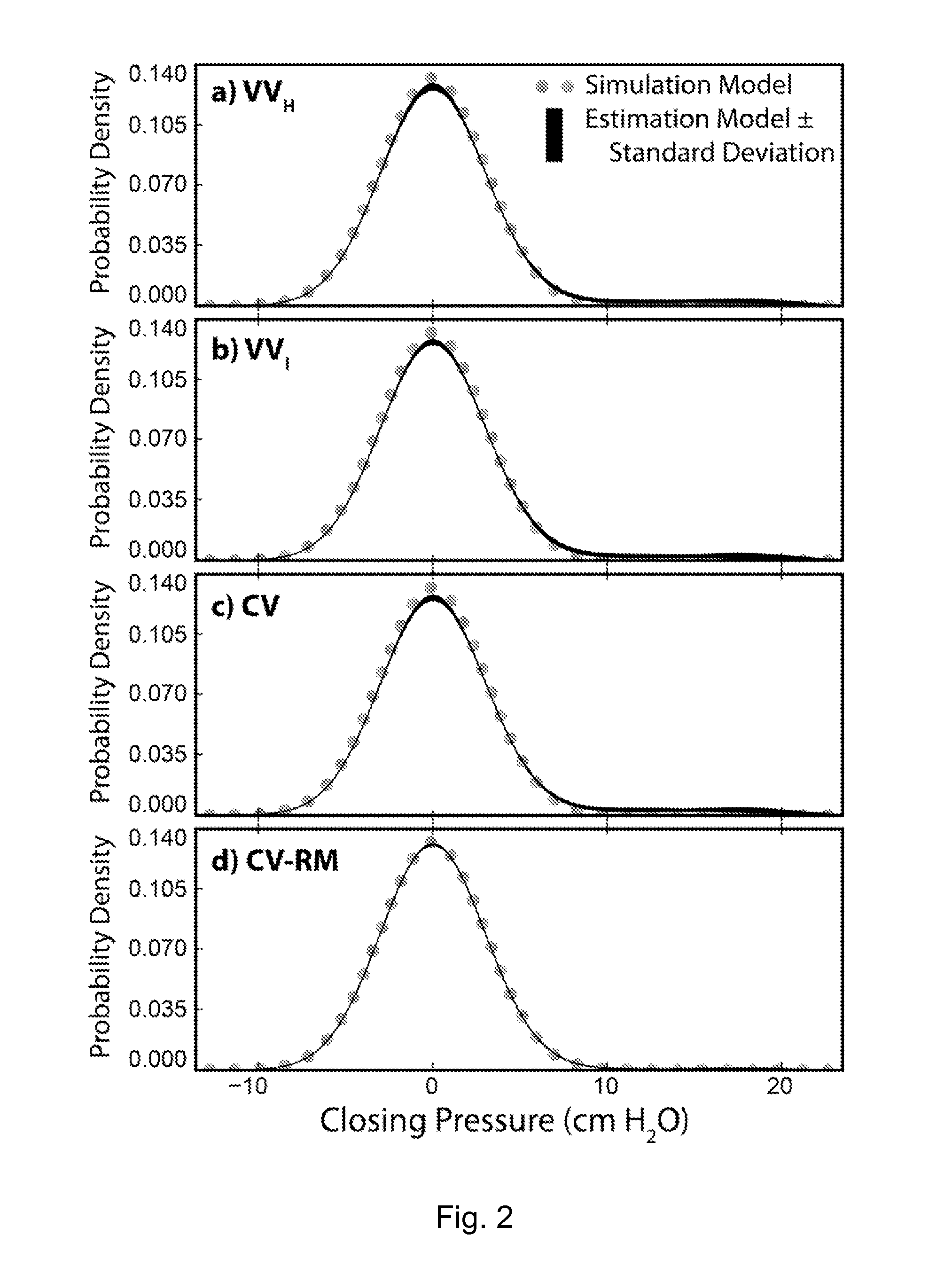Variable ventilation as a diagnostic tool for assessing lung mechanical function
- Summary
- Abstract
- Description
- Claims
- Application Information
AI Technical Summary
Benefits of technology
Problems solved by technology
Method used
Image
Examples
Embodiment Construction
[0030]Although claimed subject matter will be described in terms of certain embodiments, other embodiments, including embodiments that do not provide all of the benefits and features set forth herein, are also within the scope of this disclosure. Various structural, logical, process step, and electronic changes may be made without departing from the scope of the disclosure.
[0031]The present disclosure may be embodied as a method 100 for characterizing lung function of an individual being mechanically ventilated with a ventilator (see, e.g., FIG. 11). A ventilator is used to supply 103 a plurality of breath cycles (cycles of inspiration and expiration) to the individual. The provided ventilation is “variable ventilation” where the breath cycles have varying tidal volumes. In this way, at least one of the plurality of breath cycles does not have a same tidal volume as at least one of the other breath cycles of the plurality. The supplied 103 breath cycles may have a mean tidal volume,...
PUM
 Login to View More
Login to View More Abstract
Description
Claims
Application Information
 Login to View More
Login to View More - R&D
- Intellectual Property
- Life Sciences
- Materials
- Tech Scout
- Unparalleled Data Quality
- Higher Quality Content
- 60% Fewer Hallucinations
Browse by: Latest US Patents, China's latest patents, Technical Efficacy Thesaurus, Application Domain, Technology Topic, Popular Technical Reports.
© 2025 PatSnap. All rights reserved.Legal|Privacy policy|Modern Slavery Act Transparency Statement|Sitemap|About US| Contact US: help@patsnap.com



